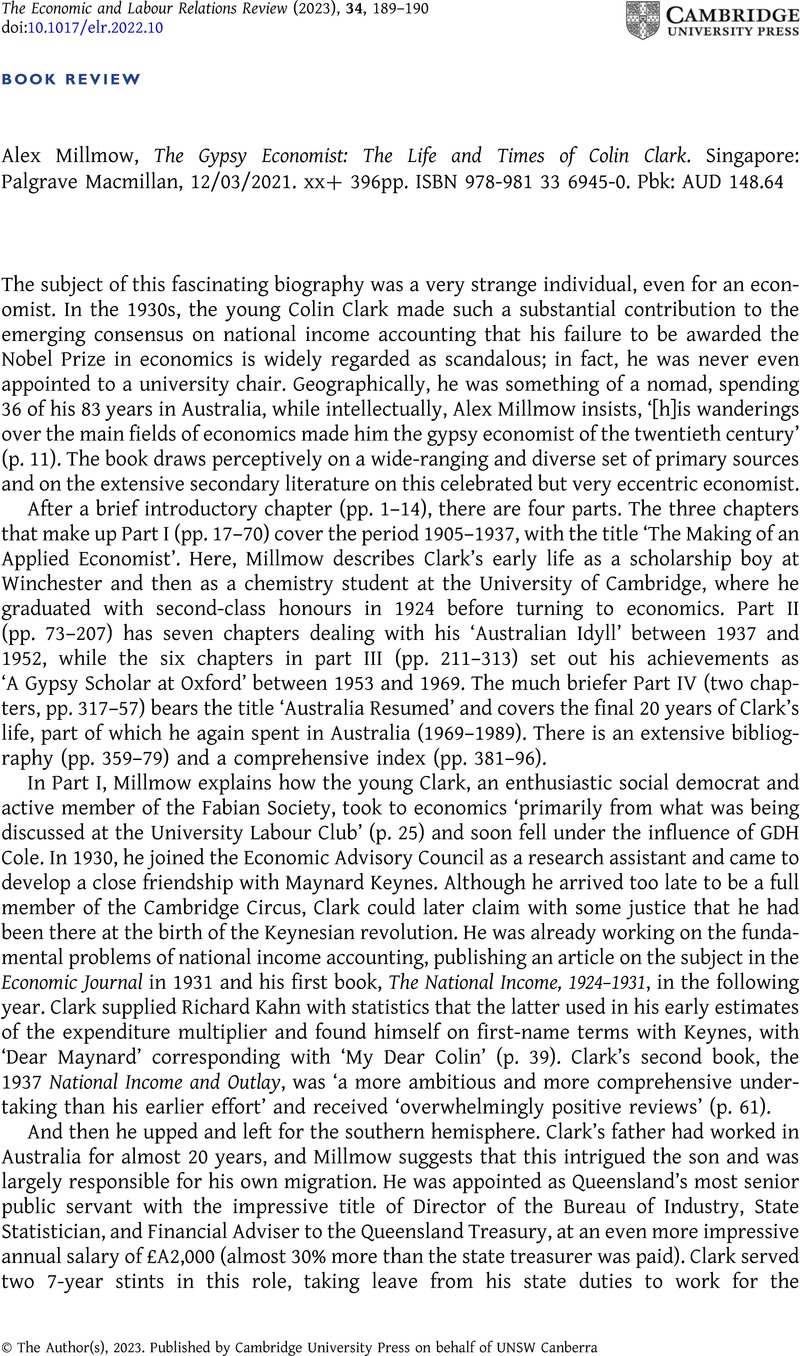No CrossRef data available.
Article contents
Alex Millmow, The Gypsy Economist: The Life and Times of Colin Clark. Singapore: Palgrave Macmillan, 12/03/2021. xx+ 396pp. ISBN 978-981 33 6945-0. Pbk: AUD 148.64
Review products
Alex Millmow, The Gypsy Economist: The Life and Times of Colin Clark. Singapore: Palgrave Macmillan, 12/03/2021. xx+ 396pp. ISBN 978-981 33 6945-0. Pbk: AUD 148.64
Published online by Cambridge University Press: 27 February 2023
Abstract
An abstract is not available for this content so a preview has been provided. Please use the Get access link above for information on how to access this content.

Information
- Type
- Book Review
- Information
- Copyright
- © The Author(s), 2023. Published by Cambridge University Press on behalf of UNSW Canberra

